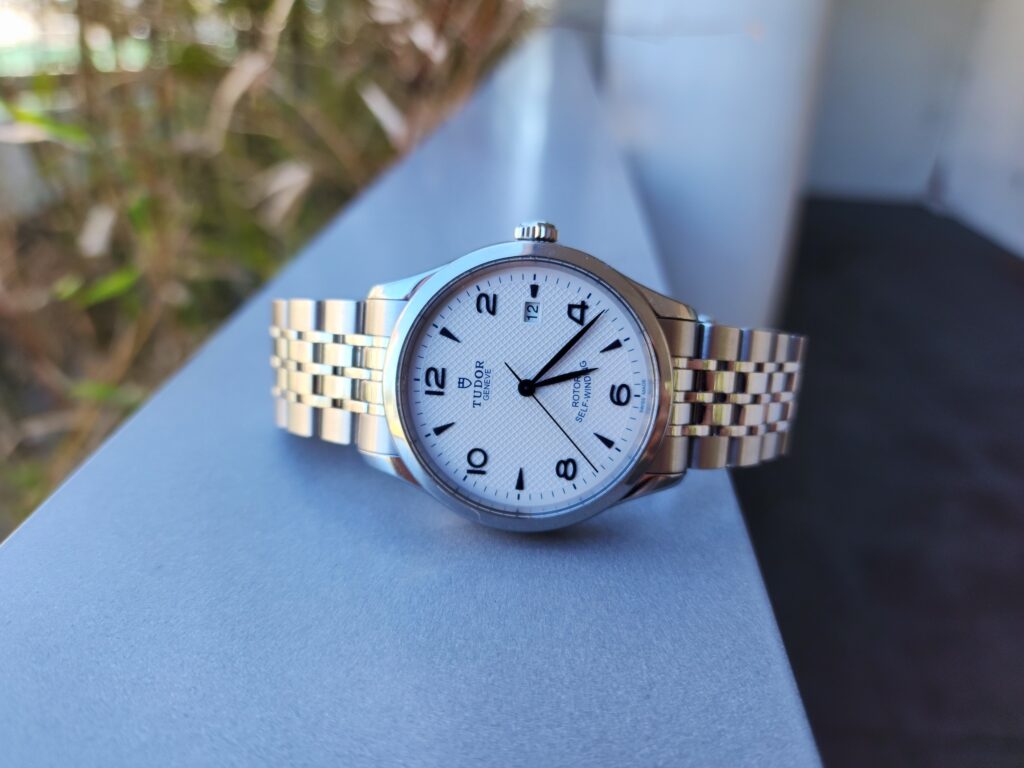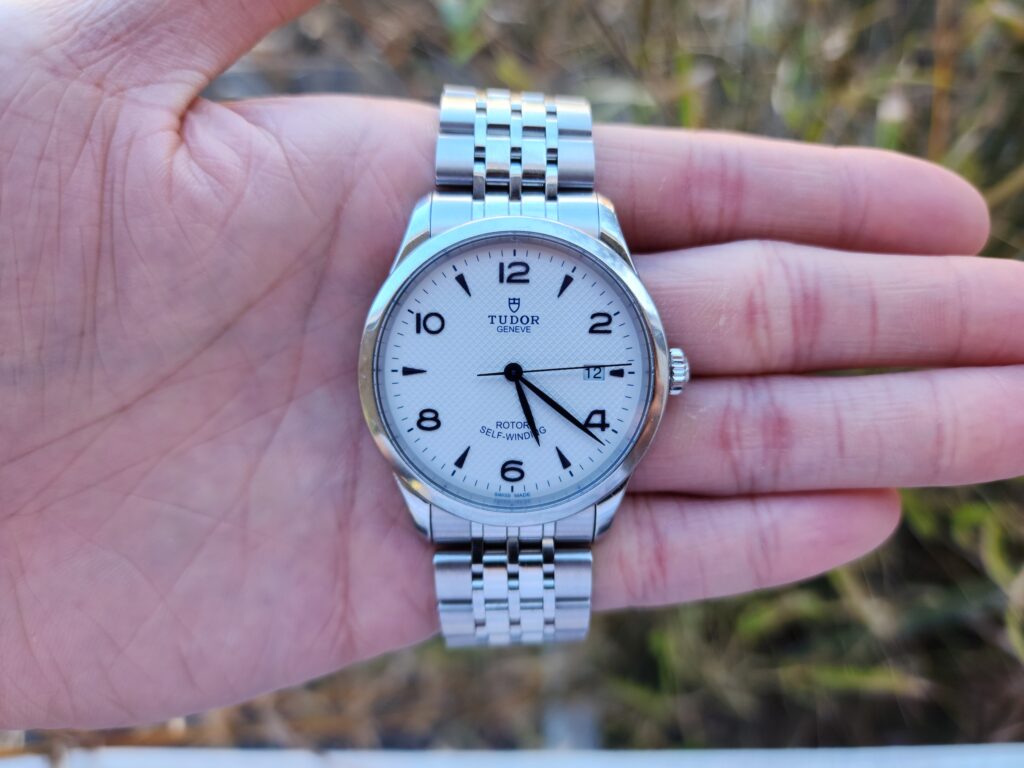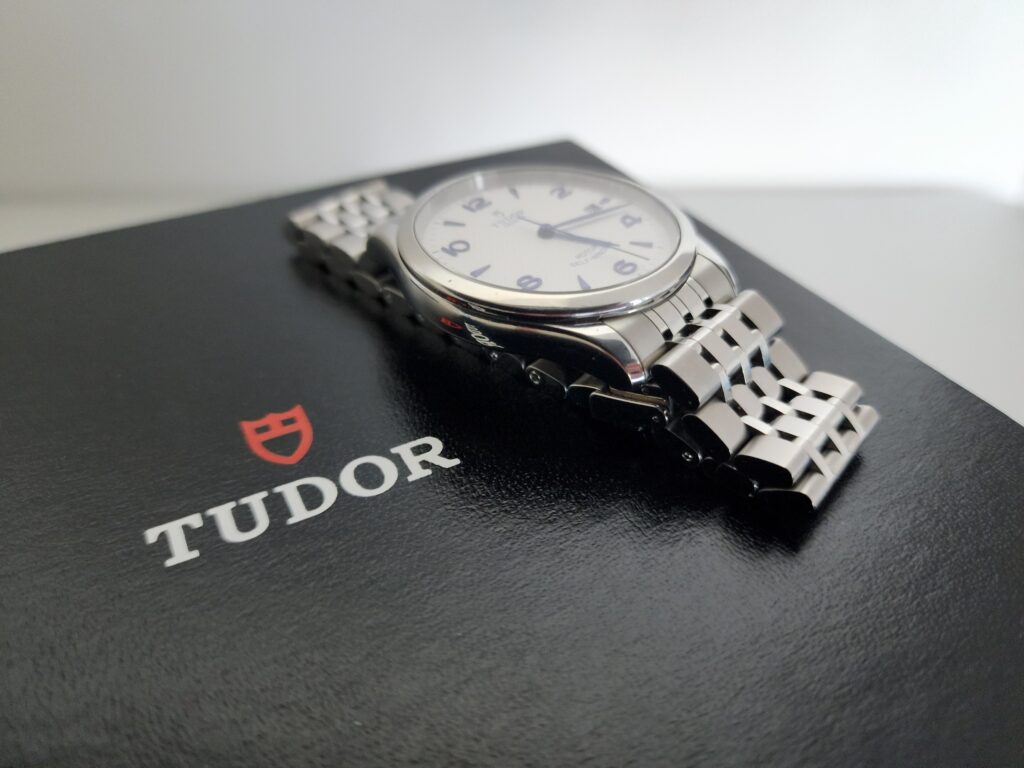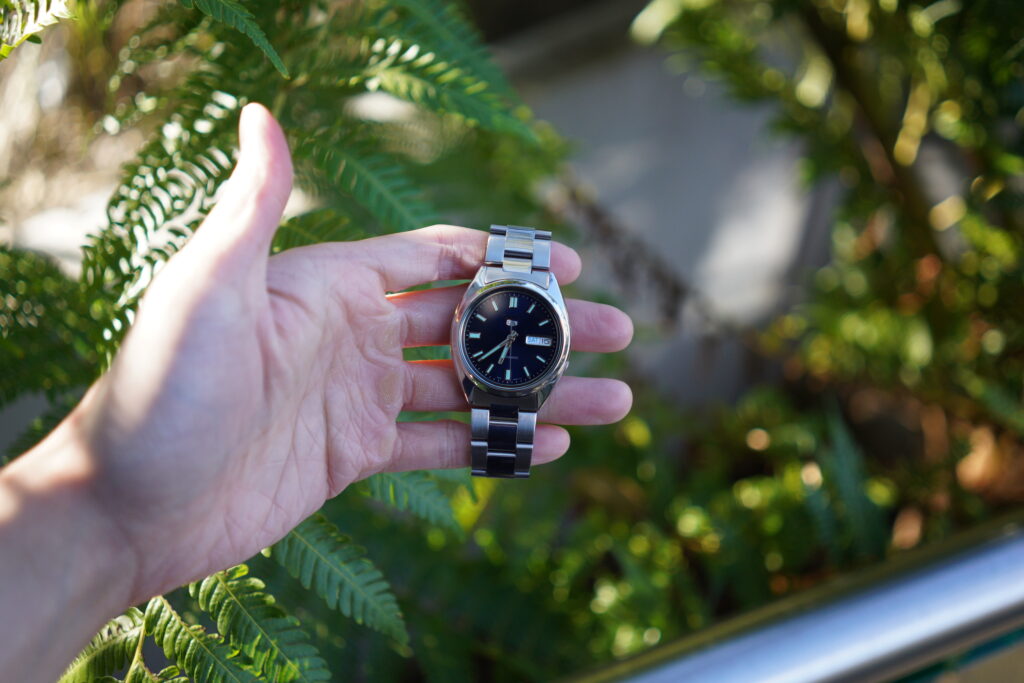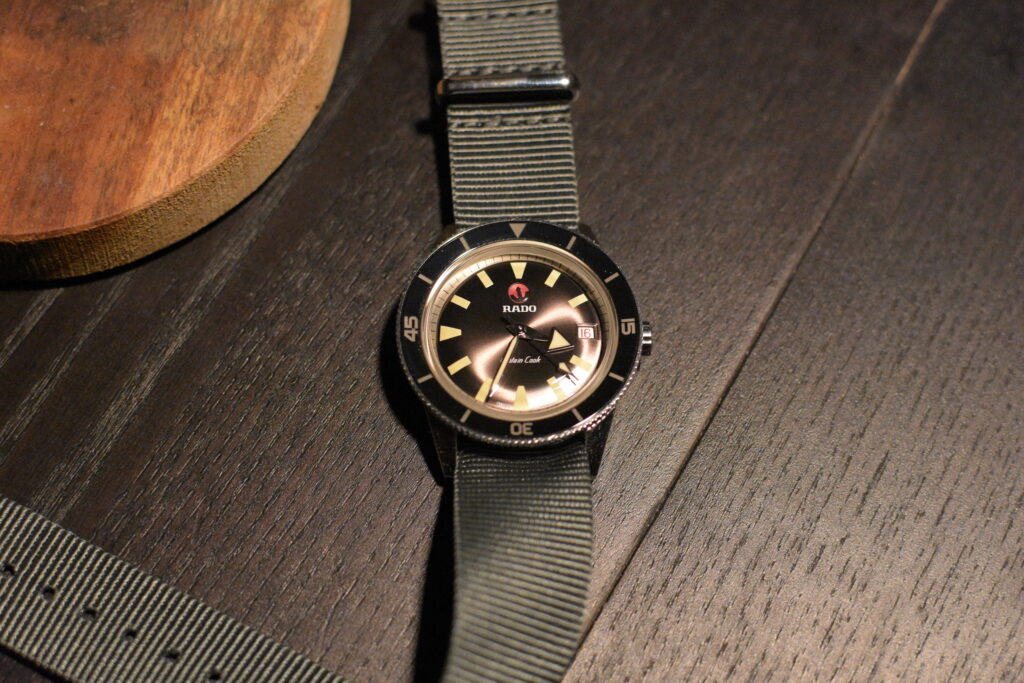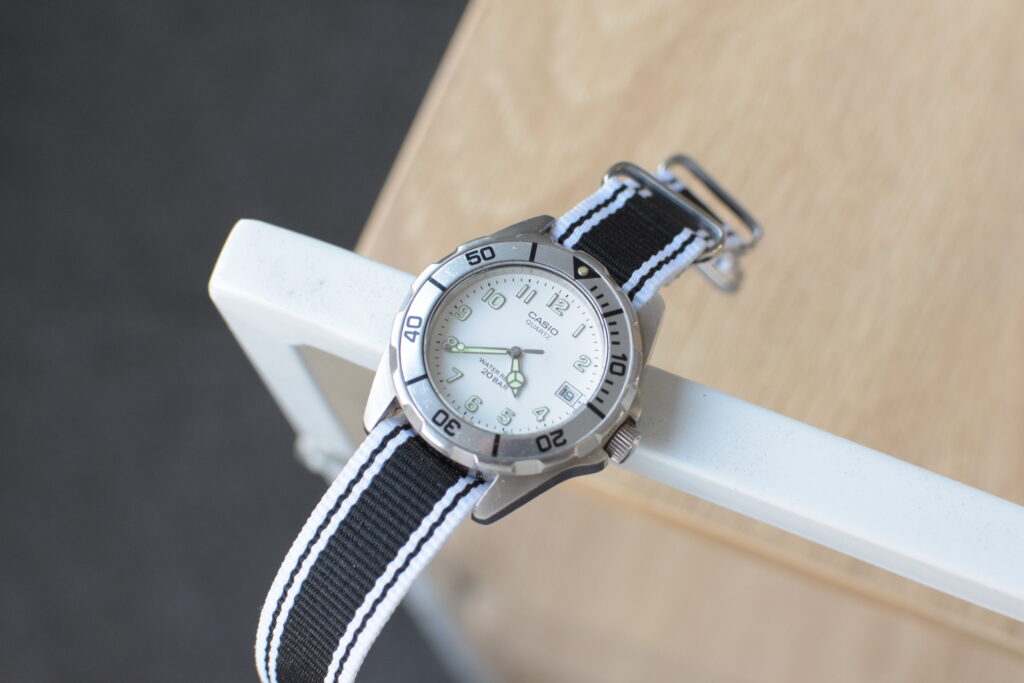Under the $2000USD mark, you’re spoiled for choice when it comes to getting a daily driver. So why do I consider the Tudor 1926 the best luxury at that price point?
There’s the Sinn 556 or 104 for those who wants the tool-watch aesthetics. You’ve got Longines, albeit their less popular models. There’s higher-end Hamilton’s, Mido’s, and Rado’s got good options too. There’s the micro brand route. Formex, Monta, are all great options.
But there’s a catch, at least for me. I don’t consider them luxurious brands. The funny thing is, all their watches are exceptionally made. Most are on the same par, some even better than the Tudor 1926. But when I think of luxury, and you’re welcome to beat me up on this all you like. I think of going into an AD, trying the pieces on, settling on one, getting it wrapped up in a nice box, and walking out with your reward. Okay fine, you can pretty much get the same thing in a Seiko Boutique for a $200 piece. Perhaps not the best point.
But, the experience is one factor. The brand name, and history, is where the Tudor 1926 does it for me.
Tudor: The Poor Man’s Rolex?
It’s no secret that Tudor is known to the world as Rolex’s little brother. It’s been called the “Poor Man’s Rolex” in the past. In 1905, Hans Wilsdorf started his watch journey, and in 1908, Rolex was born. And as they say, the rest is history.
During such history, there was a revelation to cater to other audiences. In 1946, Mounters TUDOR S.A was established. The purpose was to appeal to a more affordable segment of the market, with the reassurance of the Rolex name. Subsequently, whenever you’d get a Oyster n a Rolex, you’d get one on a Tudor. A Submariner on the Rolex, one on the Tudor. That trend continued well into the modern time, where most Tudor’s were a derivative of some popular Rolex model.
That changed when the Pelagos was introduced in 2012. And it changed even more, then the Black Bay series was introduced in the same year. Tudor then went on it’s own path, creating the ranger, North Flag, etc.
Nowadays, Tudor is it’s own thing. It’s got a hold of a market segment that used to be Omega’s. The affordable luxury segment, much like how Hans Wilsdorf intended almost a hundred years back.
And hey, if Kevin O’Leary says Tudor can no longer be called the Poor Man’s Rolex, who am I to argue.
Case size: 39mm
Lug to lug: 48mm
Thickness: 9.5mm (including crystal)
Lug width: 20mm
Case: 316L Stainless Steel, polished finish
Dial: Opaline & embossed, blued hands and indices
Crystal: Sapphire
Movement: Tudor Calibre T601 (ETA-based) 38hr power reserve
Water Resistant: 100m / 333ft
Strap: Steel bracelet, consists of 7 individual components per link, brushed external and polished centre links
Case & Bezel:
The first thing you’ll notice is how damn thin the case is – only 9.5mm. That’s gospel for those with smaller wrists – especially if its a skinny small wrist, like mine. The case on the Tudor 1926 itself pretty simple, borderline vanilla. It’s all polish finished all round, including the bezel. The shape of the case feels like a traditional Rolex Oyster case, but flattened out, and elongated. The bezel follows a polished finish, making it a bit of a scratch magnet.
The case back is your traditional Rolex & Tudor – plain with “Tudor Geneve” text circling the edge – screwed down, of course.
The crown on the Tudor 1926 is surprisingly well-executed. I only say this because it seemed rather small to me at first. I thought it would be a pain to unscrew, much like the crown on the 36mm Smiths. It’s extremely easy to operate, doesn’t take much effort at all to unscrew, and screw it back on.
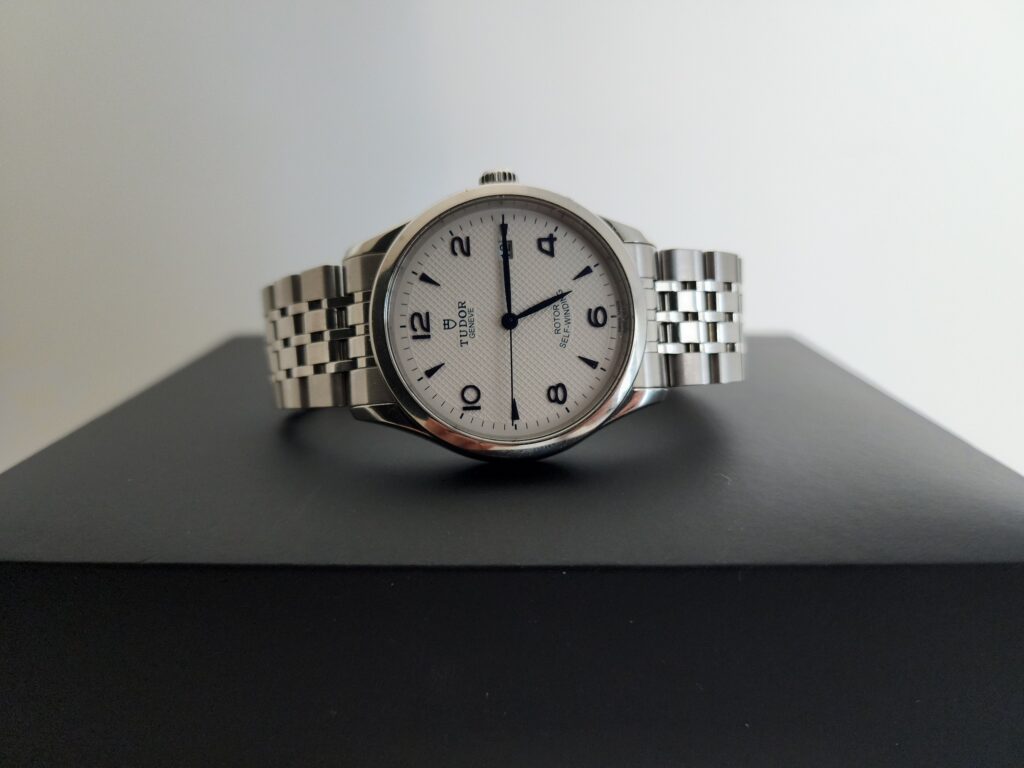
I’ll be honest, the case is nothing special. Not to say it’s lacking in built quality or anything. The fit and finish is right up there with the Tudor BB58 and the Rolex Oyster Perpetual. It’s just kind of boring. But, it’s well built, slim, and comfortable. The fact that it is all-polished might turn some people away, but given its dressy nature, I get it.
Dial & Hands
Here we go, the piece de resistance as they say. The opaline dial, paired with the waffle, is gorgeous. From far, it just seems like a regular white dial. But it catches your attention, your eye focuses, and you spot the waffle pattern. You pick it up, and start admiring it up close. I’ve done that about 50 times writing this review, up till this point.
As you’re admiring the dial pattern, you inevitably come across the blued hands and indices. Holding the 1926 flat to your face, you think to yourself “there’s not much to these blued materials, they seem boring and they have an off-black color”. Then you turn your wrist and the light catches the hands and indices. Suddenly, your wrist is now a watch winder spinning the Tudor 1926 in all possible angles.
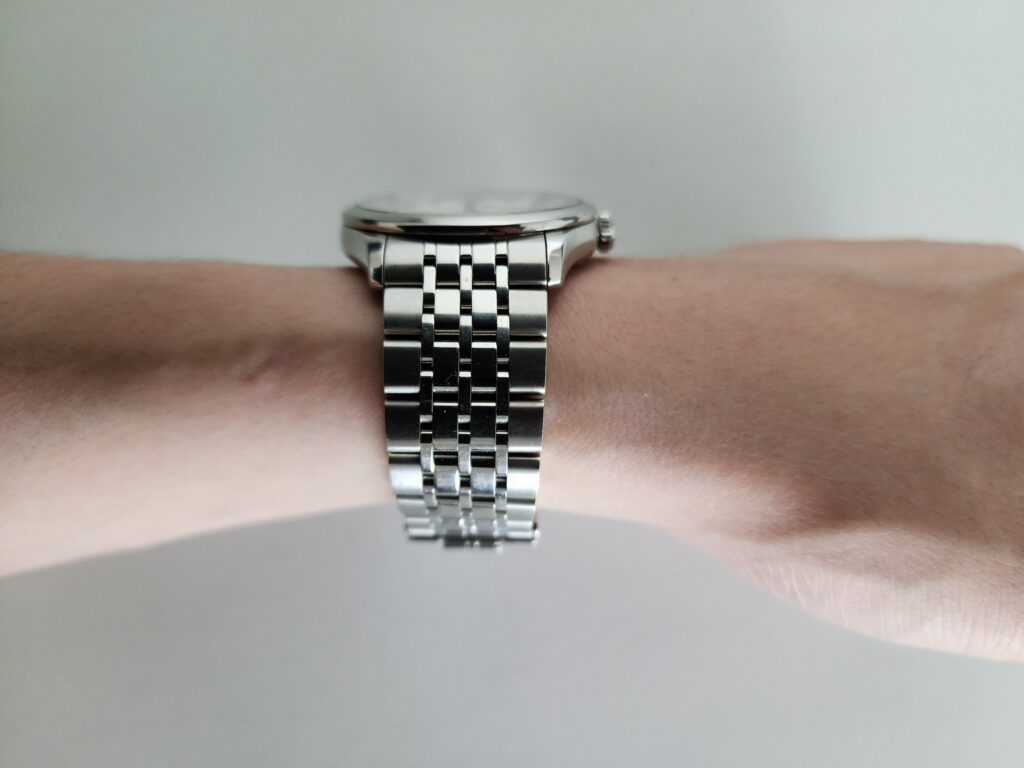
If you didn’t know, when I write these reviews, I have the watch on the desk next to the keyboard. I have genuinely never been more distracted writing a review. Every other sentence I perform the sequence of action above. Usually, I’d talk about the built materials, etc – I haven’t done that, don’t intend to.
I love the fact that the text, logo, the “Self-Winding” smily is all blued – probably not thermally heat-treated though.
The preference would be to not have the date window, and complete the symmetry with the triangular indices throughout the dial. But, given it’s designed to be someone’s daily driver, I’ll forgive it ever so slightly.
Bracelet
If the dial was supposed to be Piece de Resistance, then the bracelet on the Tudor 1926 deserves the equivalent praise. Get this, each link is built up of 7 individual pieces. Four brushed outer and mid links, and three polished connectors. Think Beads of Rice bracelet but on steroids.
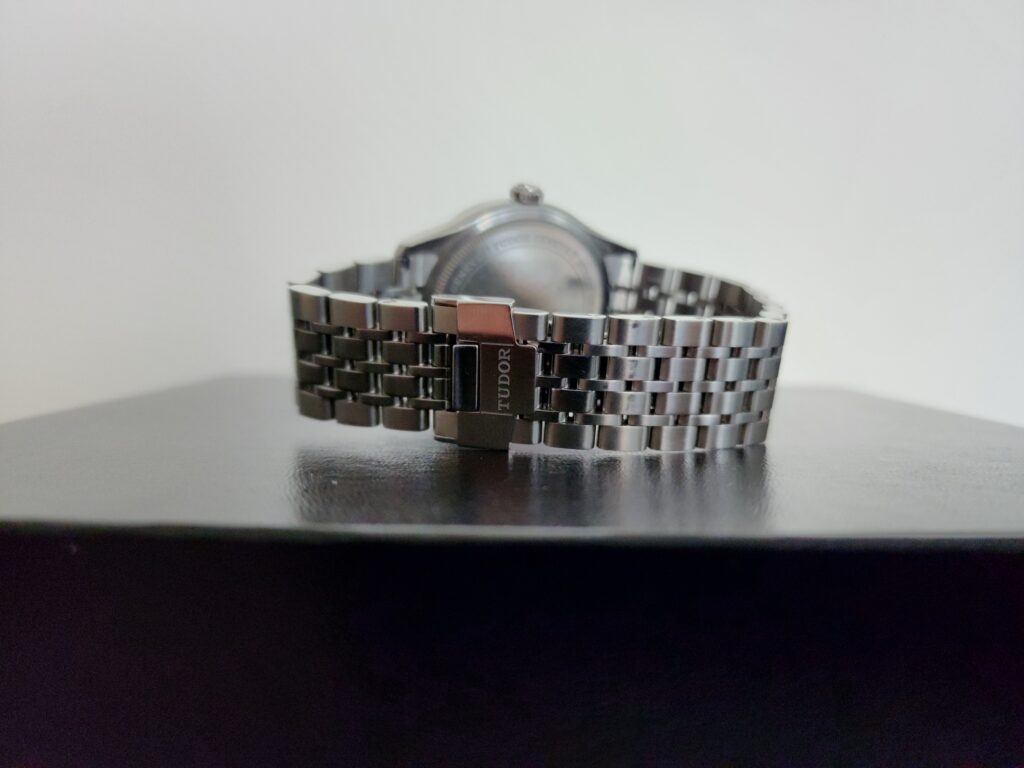
The Tudor 1926 has an extremely short flip-lock clasp – very distinct and different from the traditional. I find the short clasp extremely appropriate on the Tudor 1926. You get that much more bracelet real-estate which makes it a very comfortable wear. It’s a plus if you tend to sit on a desk and type a lot on a keyboard. The lack of clasp will allow your wrists to sit nicer on the desk.
It’s not all praise on the bracelet. It has no micro adjustments. And, it doesn’t taper. Never mind the tapering, but micro adjustments is pretty important if this were to be your daily driver. The saving grace is that each link takes up very little space, so you could find a pretty good fit. But, here in Sydney, the weather can change up fast – from cold to hot in hours. Without any micro adjustments, that’s annoying.
Comfort & Wearability
It’s got the perfect proportions for smaller wrists and up. Most wrists will find this fitting perfectly. Every single aspect of the Tudor 1926 feels elegant and delicate. But it’s really solid. I’d call it the “luxurious built quality” effect, where it’s just finished so well it almost feels like a jewelry.
The Tudor 1926 leans towards the dressier side of things. However, you can easily take this anywhere. It pairs well with t-shirt and jeans, suit, shorts on the beach. Remember, it’s got a screw-down crown and 100m of water resistance. It might look delicate, but it’s built to be a daily driver.
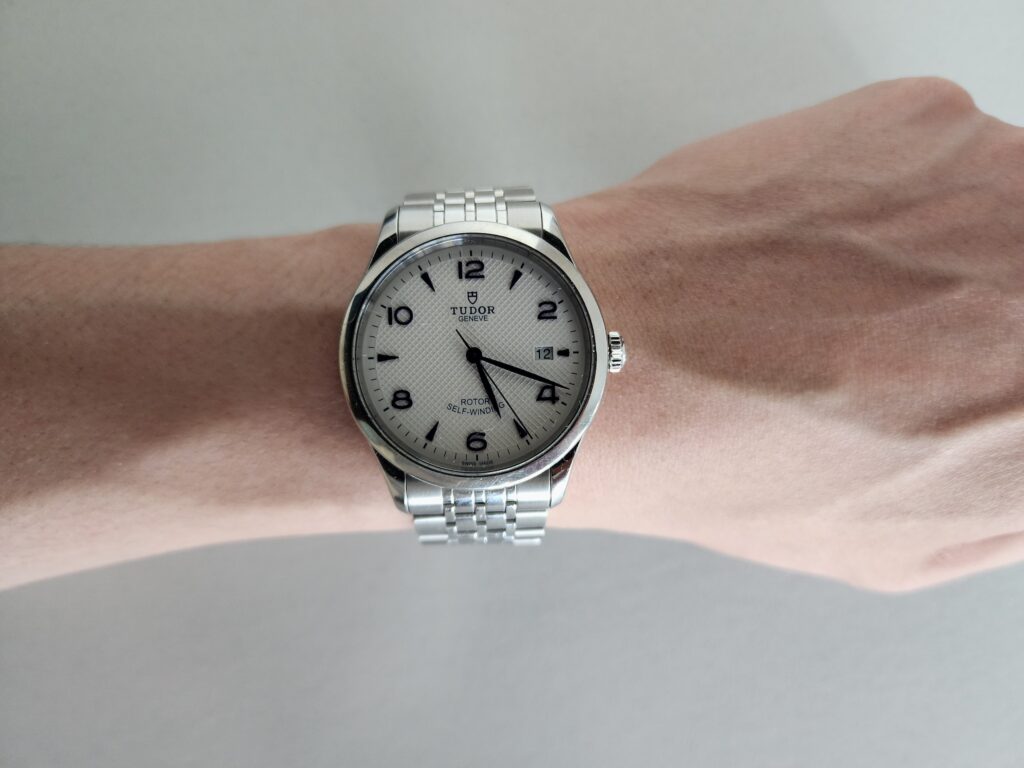
Tudor 1926: Who is it for?
I believe the Tudor 1926 is targeted for a specific audience. The main reason being you’re looking for an affordable entry into Swiss luxuries. At under $2000, you’re getting a Tudor, brand new. It’s historical ties with Rolex, and it’s modern independence makes Tudor a market-leader in the < $5000USD space. The 1926 is an entry to that.
Even if you’re not overly concerned with brand names and history. The Tudor 1926 is worth considering if you’re wanting to get luxury-value for your money. Yes you could get a higher-end Hamilton and save change, but it’s not the same.
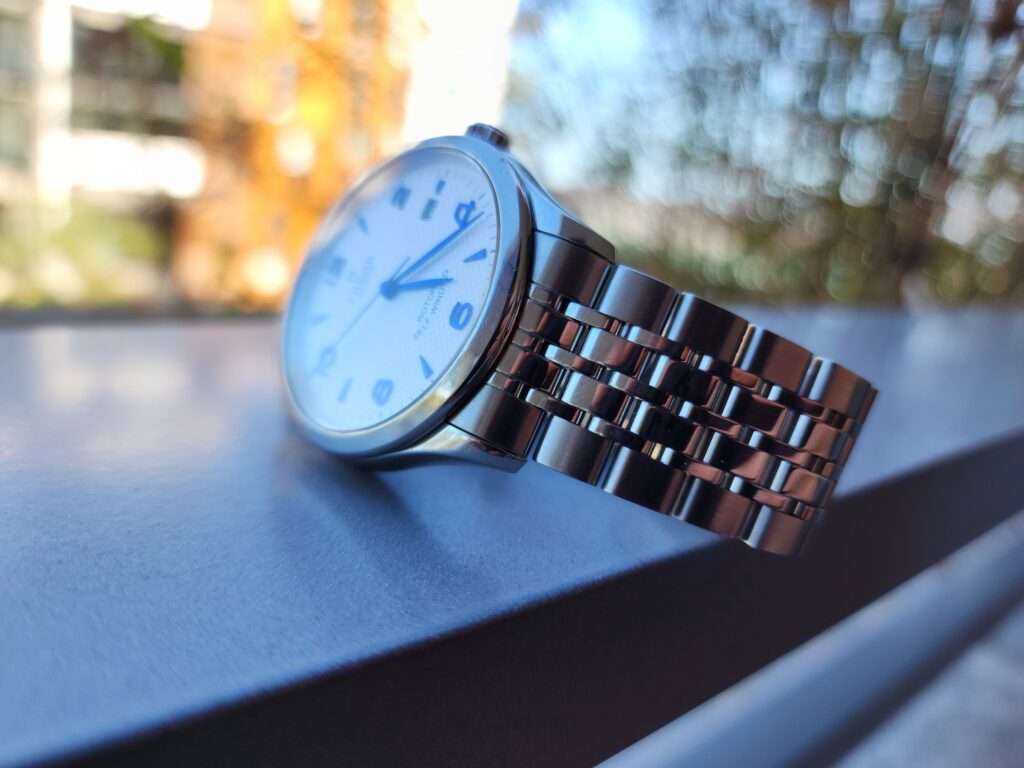
The Tudor 1926 is a really good option for those taking their first plunge into luxury Swiss watches. You’ll quickly find out if you’re comfortable spending more than a couple of grand on a timepiece. It’s almost a gateway piece. You kind of have two pathways after this:
Move onto higher-end Tudor’s, the Omega, and eventually Rolex. Or whatever more expensive brands.
Go back to Tissot, Seiko, Hamilton, etc. You can buy them for less money and they’re fantastic watches.
And some of you, the lucky few, will purchase this watch and call it quits on your watch journey. If you are one of them, kudos to you.
Tudor 1926 Closing Thoughts
Aesthetics: Perfect mixture of dress and daily driver – the opaline is on the dressier side
Comfort: 39mm (mostly-dial) can look large, but the wear is sublime – 9.5mm thin!
Price: It’s by no means “cheap”, but for a well-known Swiss luxury, I’d consider it affordable.
